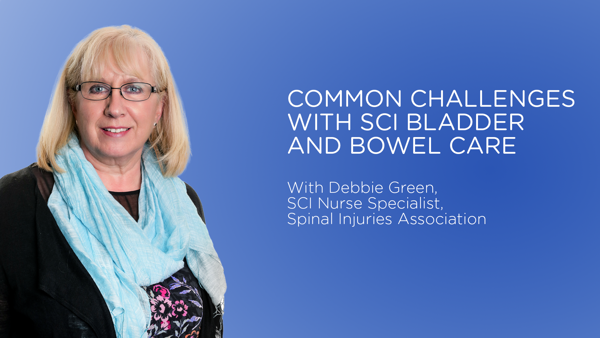108 Artikler
-
Aldring med rygmarvsskade - Påvirkning af tarm- og blærefunktion
key:global.content-type: Artikel
I dette webinar vil du høre fra Dr. Rebecca Haddad, som er læge med speciale i fysisk medicin og rehabilitering med fokus på geriatri ved Sorbonne Université i Paris, Frankrig. Hendes kliniske, forsknings- og undervisningsarbejde er dedikeret til pleje af mennesker, der ældes med handicap, med særligt fokus på aldring af blæren.

-
Seksuel dysfunktion hos mænd, der ældes med rygmarvsskade
key:global.content-type: Artikel
I dette webinar vil du høre fra Dr. Gianluca Sampogna, en urologisk kirurg, der arbejder på Spinal Unit, Niguarda Hospital, Milano, et henvisningscenter for blære-, tarm- og seksuelle sundhedsproblemer i rygmarvsskadede befolkninger. Han er leder af Sexual Health Program, som tilbyder mange løsninger fra seksuel rådgivning til rehabilitering, fra farmakoterapi til kirurgi.

-
Resultater hos personer, der ældes med kronisk rygmarvsskade
key:global.content-type: Artikel
I dette webinar vil du høre fra Dr. Gianna Rodriguez, klinisk professor fra Michigan USA. Hun er direktør for Spinal Cory Injury rygmarvsskade-programmet i Department of Physical Medicine and Rehabilitation (PMR) ved Michigan Medicine i USA.

-
Alderens påvirkning på blære- og tarmfunktion ved rygmarvsskade
key:global.content-type: Artikel
Denne artikel undersøger, hvordan aldringsprocessen påvirker blære- og tarmfunktionen hos SCI-patienter og diskuterer behovet for specialiserede behandlingsstrategier.

-
Evidensbaserede anbefalinger til den aldrende befolkning med rygmarvsskade
key:global.content-type: Artikel
Denne artikel opsummerer de største udfordringer og anbefalinger, der er identificeret i kliniske retningslinjer (CPG'er), der styrer en aldrende befolkning med en rygmarvsskade. Den fremhæver også huller og forbedringsområder i eksisterende retningslinjer.

-
Use of Transanal Irrigation (TAI) in the treatment of persistent bowel disorders in patients with endometriosis
key:global.content-type: Artikel
Transanal Irrigation (TAI) is known to be a successful therapy to treat LARS, and in this study, Orlandi et al explore the use of TAI as a treatment option for women with endometriosis who experience LARS-like symptoms.

-
Valget har betydning – både når det gælder reducering af miljø- og samfundsudgifter
key:global.content-type: Artikel
Valget har betydning – både når det gælder reducering af miljø- og samfundsudgifter

-
Interaktivt værktøj til brug i behandling af patienter, med tilbagevendende urinvejsinfektioner som udfører RIK
key:global.content-type: Artikel

-
Structured TAI Training in Pediatric Patients Improves Outcomes and Reduce Failures
key:global.content-type: Artikel
Take part of clinical evidence that speaks to the improved outcomes of using TAI in pediatric patients when coupled with an individualized approach upon initiation of TAI.

-
Vigtigheden ved overfladeteknologi
key:global.content-type: Artikel
For those who rely on intermittent catheterization, minimizing discomfort is a key concern. This short video explores the science behind a smoother catheterization experience.

-
Hvordan katerets egenskab påvirker risikoen for urinvejsinfektioner
key:global.content-type: Video
I denne korte, informative video (ca. 5 minutter) dykker Susanne Vahr, sygeplejerske og seniorforsker med næsten 30 års erfaring, dybt ned i det komplekse tema, urinvejsinfektioner.

-
Hyppige udfordringer med blære- og tarmpleje ved rygmarvsskade
key:global.content-type: Video
Debbie Green, rygmarvsskade specialist leder, SIA, adresserer nogle af de problemer, som en person med rygmarvsskade står over for med deres blære og tarmpleje.
